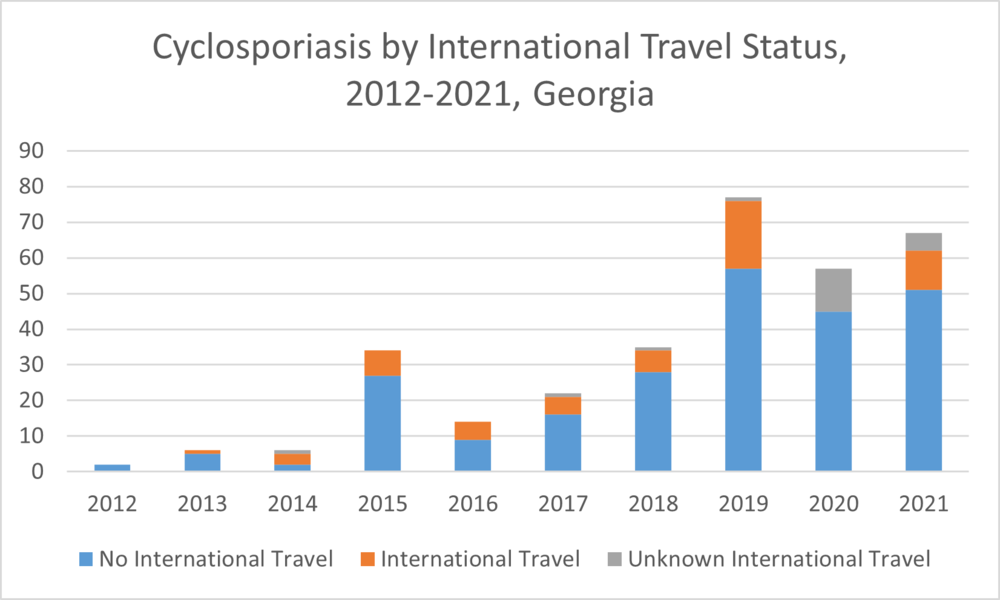
Cyclospora
Cyclosporiasis Basics
Symptoms of cyclosporiasis usually begin about 7 days (range 2 to 14 days) after ingestion of the infectious form of the parasite, sporulated oocysts. The most common symptom is watery diarrhea. Other symptoms may include loss of appetite, weight loss, cramping, bloating, increased gas, nausea, and fatigue. Symptoms can last a few weeks, one month, or more. Symptoms sometimes go away then come back again after a few days or a week. The infection is usually not life threatening.
Cyclospora cayetanensis has only been detected in humans to date. The parasite has a complicated life cycle in which unsporulated oocycsts are shed in human stool. This form of the parasite is not infectious. The unsporulated oocycst must spend 1 to 2 weeks in favorable environmental conditions before it can sporulate and become infectious to humans. To become infected with Cyclospora, a person must consume food or water contaminated with feces. Person-to-person transmission is unlikely.
Stool specimens must be tested in order for a person to be diagnosed with Cyclosporiasis. Most healthy people will not require antibiotics to treat their illness, however, Cyclosporiasis symptoms may persist for weeks to a month or longer without treatment. Trimethoprim/sulfamethoxazole has been FDA-approved for treatment of cyclosporiasis and is available by prescription.
To prevent cyclosporiasis, avoid food or water that might have been contaminated with feces. Wash hands with soap and water before and after handling fresh fruits and vegetables. Wash fresh fruits and vegetables under running water before eating, cooking, or cutting.
In the United States, foodborne outbreaks of cyclosporiasis have been linked to various fresh produce items, including cilantro, basil, leafy greens, and raspberries, imported from countries where Cyclospora is endemic.
Cyclosporiasis for Healthcare Professionals
Cyclosporiasis is a notifiable disease in Georgia, which means that every person with laboratory-diagnosed illness should be reported to the Georgia Department of Public Health. The number of cases is reported from the state to the Centers for Disease Control and Prevention (CDC) for national disease surveillance.
Cyclosporiasis Statistics
Reported cases of cyclosporiasis have been higher since 2015 when compared to the previous 10 years, however case reports have been highest in the past 3 years (2019-2021). This is likely due to a change in testing practices. The majority of cyclosporiasis cases are reported in the summer months, specifically June and July.

Other Resources
CDC Cyclosporiasis Website: https://www.cdc.gov/parasites/cyclosporiasis/index.html
CDC Cyclosporiasis Website for Healthcare Professionals https://www.cdc.gov/cyclosporiasis/hcp/clinical-overview/